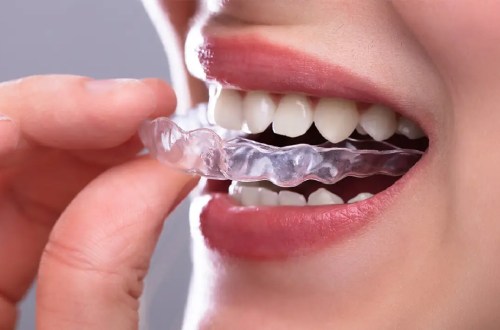Arthritis is a debilitating condition involving pain and inflammation in the joints. Although medical treatment can help, some home remedies and lifestyle changes can also reduce symptoms.
There are four categories of arthritis treatment:
- Therapies
- Self-care
- Medications
- Surgery
Major Arthritis Treatments
Here are some options for arthritis treatment:
- Keep Your Weight in Check:
Your weight can aggravate arthritis symptoms. The extra weight puts more pressure on your joints and other body parts. Therefore, it is crucial to lose weight if you have osteoarthritis and are overweight or obese. Your doctor will help you set a goal weight and design a program to help you reach that goal.
Reducing stress on joints by reducing weight can help:
- To improve your mobility
- Reduce the pain
- Prevent future joint damage
- Massage & Exercise Regularly:
The new guidelines strongly recommend starting an appropriate exercise program. Exercising with a trainer can be particularly helpful as it increases motivation.
Massage therapy especially after exercising to cool down muscles is really helpful, you can do it manually and even try massage guns to help out with this
Arthritis exercise can help you:
- To manage your weight
- Keep your joints flexible
- Strengthen the muscles around the joints, offering more support
- Try Acupuncture
Acupuncture is an ancient Chinese treatment that involves inserting thin needles into specific points on your body. Practitioners say it works by redirecting energies and restoring balance in your body. In addition, acupuncture helps to reduce arthritis pain which the ACR/AF conditionally recommends.
- Surgery:
If conservative measures do not help, doctors may suggest surgery, such as:
- Joint Repair: In some cases, the joint surfaces can be smoothed or realigned to reduce pain and improve function. These procedures can often be performed arthroscopically – through minor cuts through the joint.
- Joint Replacement: This procedure separates the damaged joint and restores it with an artificial one.
- Joint Fusion: This procedure is more commonly used on smaller joints, such as those in the wrist, ankle, and fingers. It removes the ends of the two bones at the joint and locks them together until they heal into one rigid unit.
- Follow a Healthy Diet
Following a diet rich in fresh fruits, vegetables, and whole foods can help boost your immune system. There is some evidence that dietary choices can affect people with both Rheumatoid Arthritis and Osteoarthritis. A plant-based diet provides antioxidants that can help reduce inflammation by scavenging free radicals from the body.
On the contrary, a diet high in red meat, processed foods, saturated fat, added sugar, and salt can aggravate the inflammation characteristic of arthritis.
- Tai chi
Tai chi is a low-impact exercise that involves slow and gentle movements to increase flexibility, muscle strength, and balance. In 2013, researchers reviewed seven studies that examined the effectiveness of tai chi in improving arthritis symptoms.
The authors concluded that a 12-week tai chi course reduced pain and stiffness and increased physical function in osteoarthritis participants.
- Medicines
Medicines used to treat arthritis vary depending on the type of arthritis. Commonly used arthritis medications include:
- NSAIDs: Nonsteroidal Anti- Inflammatory Drugs (NSAIDs) help relieve pain and reduce inflammation. Examples are ibuprofen (Advil, Motrin IB, others) and naproxen sodium (Aleve). However, strong NSAIDs cause stomach irritation and may also increase the risk of a heart attack. These are also available as creams or gels that can be rubbed onto the joints.
- Anti-irritants: Some creams and ointments contain menthol or capsaicin, which makes peppers hot. Rubbing these products on the skin over a painful joint can disrupt the transmission of pain signals from the joint itself.
- Steroids: Corticosteroid medications, like prednisone, reduces inflammation and pain and slow joint damage. Corticosteroids can be given as pills or injections into the painful joint. Side effects may include bone thinning, weight gain, and diabetes.
- Disease-Modifying Anti-Rheumatic Drugs (DMARDs): These drugs can slow the progression of rheumatoid arthritis and save joints and other tissues from permanent damage. In addition to conventional DMARDs, there are biologics and targeted synthetic DMARDs. Side effects vary, but most DMARDs increase the risk of infections.
- Arthroscopy
It is a process to remove inflamed joint tissue.
During arthroscopy, a thin tube with a light and camera (arthroscope) is inserted into the joint through a narrow cut in the skin so that the surgeon can see the affected joint. Special instruments are inserted through other small incisions in the skin to remove the damaged tissue.
You don’t usually need to stay in the hospital overnight for this type of surgery, but the joint will need to rest at home for a few days.
- Joint replacement
It is known as joint replacement or arthroplasty. Some people with rheumatoid arthritis might need surgery to replace part or all of a joint, such as a hip, knee, or shoulder joint. Replacing these joints is a significant operation involving several days in the hospital and months of rehabilitation. The latest prosthetic joints are believed to have a lifespan of 10 to 20 years, and some functions may not be restored after replacing a damaged joint with a prosthetic one.
Conclusion:
Arthritis is a leading cause of pain and disability worldwide. You can find plenty of advice on relieving pain in arthritis and other conditions with exercise, medication, and stress reduction. With early diagnosis, you can manage most types of arthritis, and pain and disability are minimized.






